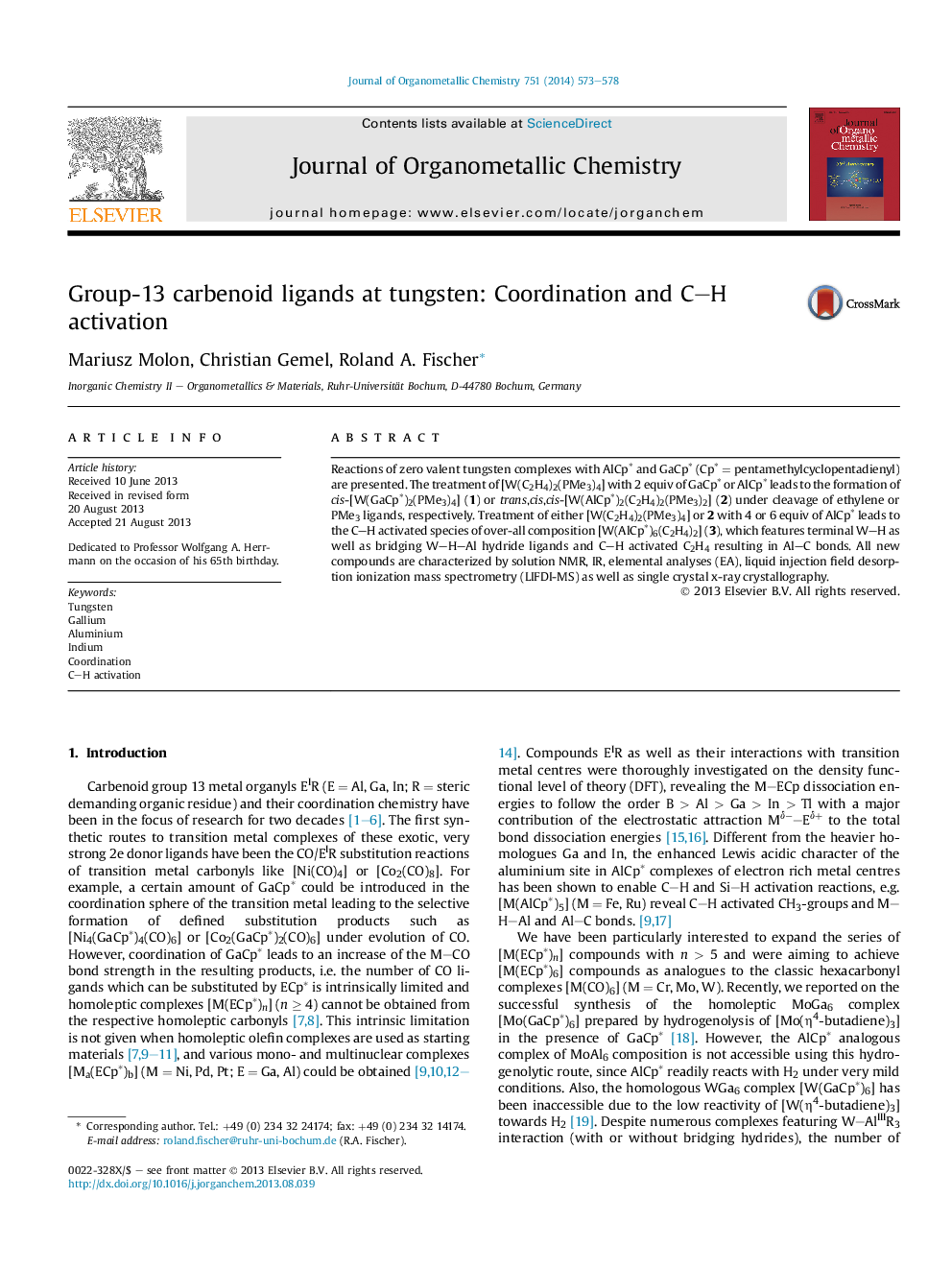| Article ID | Journal | Published Year | Pages | File Type |
|---|---|---|---|---|
| 1324316 | Journal of Organometallic Chemistry | 2014 | 6 Pages |
•Structural characterization of the shortest W–Al bond in a molecular compound.•C–H activation of ethylene.•Formation of a novel organoaluminium cage structure acting as a ligand for tungsten.
Reactions of zero valent tungsten complexes with AlCp∗ and GaCp∗ (Cp∗ = pentamethylcyclopentadienyl) are presented. The treatment of [W(C2H4)2(PMe3)4] with 2 equiv of GaCp∗ or AlCp∗ leads to the formation of cis-[W(GaCp∗)2(PMe3)4] (1) or trans,cis,cis-[W(AlCp∗)2(C2H4)2(PMe3)2] (2) under cleavage of ethylene or PMe3 ligands, respectively. Treatment of either [W(C2H4)2(PMe3)4] or 2 with 4 or 6 equiv of AlCp∗ leads to the C–H activated species of over-all composition [W(AlCp∗)6(C2H4)2] (3), which features terminal W–H as well as bridging W–H–Al hydride ligands and C–H activated C2H4 resulting in Al–C bonds. All new compounds are characterized by solution NMR, IR, elemental analyses (EA), liquid injection field desorption ionization mass spectrometry (LIFDI-MS) as well as single crystal x-ray crystallography.
Graphical abstractZero valent tungsten complex [W(C2H4)2(PMe3)4] reacts with AlCp* and GaCp* (Cp* = pentamethylcyclopentadienyl) in the formation of cis-[W(GaCp*)2(PMe3)4] (1), trans,cis,cis-[W(AlCp*)2(C2H4)2(PMe3)2] (2), or a C–H activated species of over-all composition [W(AlCp*)6(C2H4)2] (3).Figure optionsDownload full-size imageDownload as PowerPoint slide
